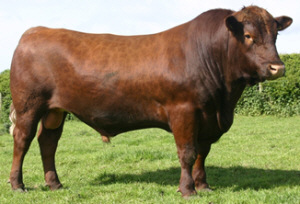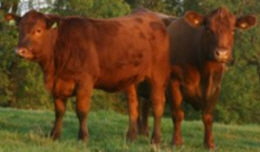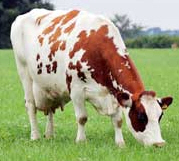



Composite
History
Many breeds that are considered purebreds are actually composites if you go back far enough in time. The understanding of genetics involved in crossing breeds of cattle has progressed enormously in the last 15 years. Photo courtesy of Stabiliser Cattle Company, www.bigbeef.co.uk |
A planned mating scheme is designed to combine the desirable traits of two or more breeds into one “package” (or composite). A more formal definition of a composite is a breed made up of at least two component breeds, designed to retain heterosis in future generations without crossbreeding and maintained as a purebred.
Some composite breeds of beef cattle have their own breed associations with a governing body as well as herd book registration. Examples include the Bos indicus influenced cattle, such as Beefmaster, Brangus, Red Brangus, Braford, Santa Gertrudis. Many of these cattle have established themselves in a particular production environment.
Other composites may be considered to be more newly formed lines. Many are based on British and Continental breed combinations. Examples of some of the newly formed lines are Leachman Stabilizer, Leachman Rangemaker and the Noble Line. The genetic merit of composites relies on the performance-oriented breeders who have a commitment to carefully planning composite line development.
Characteristics
 Photo courtesy of Stabiliser Cattle Company, www.bigbeef.co.uk |
Composites have several advantages over rotational crossbreeding. It is a simple system, which if done correctly can still enjoy most of the heterosis benefits on fertility and longevity.
Statistics
Comparative
Distribution
Composite cattle and associations are popular in Europe, Australia and the US.References (the above information was cited from the following sites)
www.compositebeef.com.au
Composite Beef Breeds, University of Arkansas, Division of Agriculture, Brett Barham, Ph.D. Cooperative Extension www.uaex.edu
www.bigbeef.co.uk


